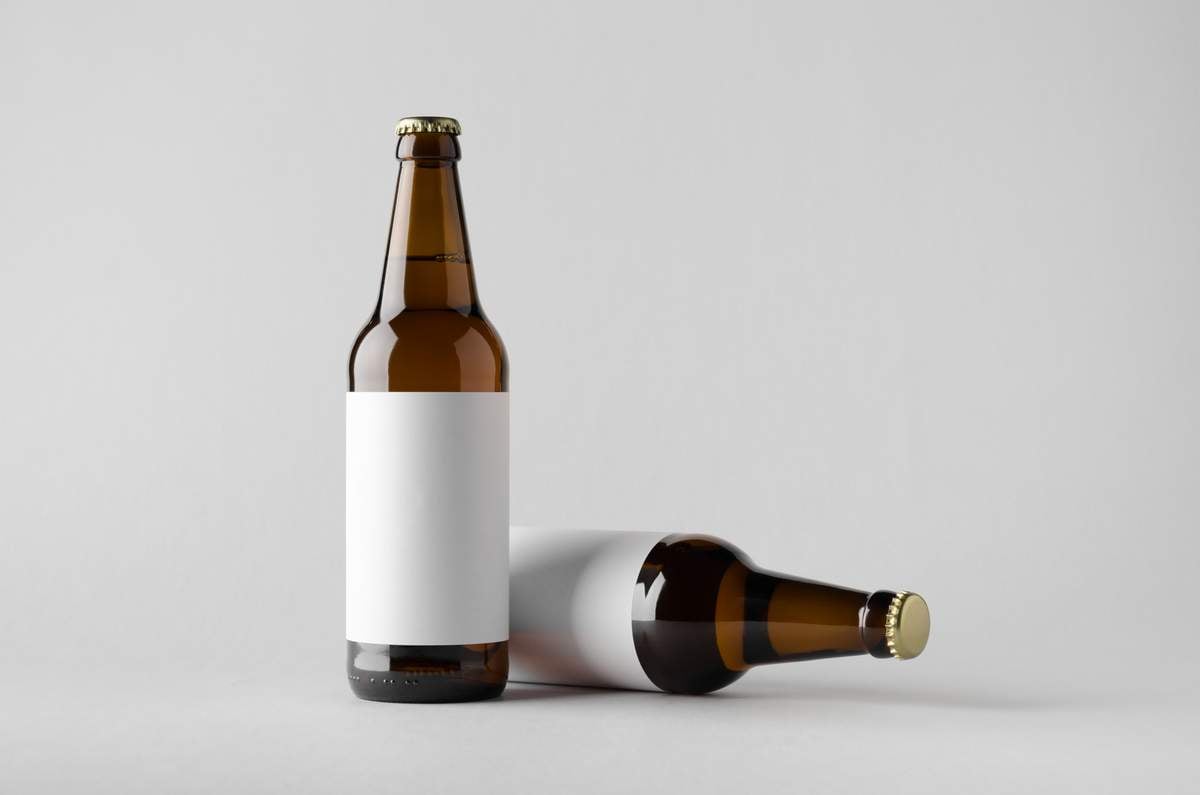
Here’s a simple tutorial on how to do a trademark clearance search. Will that cut the lawyer (i.e., me) out of the picture forever? Probably not. But having this tool will save you time, money, and hassle. Do this simple search any time you are considering brewery or beer names. If all my clients did that, I might have less business — but more smiles. Let’s say I want to start a new business called “Singlefin Brewing Company.” It exudes a chill, laid-back vibe and riding a singlefin surfboard is possibly the best thing in the world.
What now?
1. Google search

Do some digging on Google to see if there is already someone in the U.S. selling a similar product or service under the name you would like to use. Search for some variations and keep an eye out for anything that is reasonably related to your mark. That really is anything that you could say is in the same general ballpark as your business. Be honest—”Ford Tire Repair” isn’t going to fly even if you’re selling services, not cars.
Searching for “singlefin” or “single fin” and “beer” turns up a couple items of interest. A brewer in Australia, Gage Roads Brewing Company, sells Single Fin Summer Ale. No worries—trademarks are country-specific. If Gage Roads has any U.S. trademarks, we’ll find out in a minute. Not a problem for now.
Kane Brewing Co. in New Jersey sells other surf-themed beers and used to sell a Single Fin Belgian Ale. But it looks like that beer got nixed from their lineup. Uh oh, Kalihi Brewing in Honolulu has a Single Fin Lager on tap and in cans in Hawaii. Hmmm. Should I give up? Change the name to Couch Potato Brewing and hang TVs from all the walls instead of antique surfboards?
Not yet. Let’s ride this wave and see where it takes us.
2. Social media search
If Google looks clear, check out other social media sites. Searching Instagram for “single fin beer” turns up a few pics of the Australian ale and a microbrewery in Uruguay. Again, not an issue because those are outside the U.S. Facebook doesn’t offer anything different, and neither do BeerAdvocate nor Untappd. I think we’re good there—ride on!
3. Real life search

I advise clients to check trade journals and industry magazines for information on companies that might be using a name but have little or no web presence. One client of mine had an issue with a nanobrewery six states away that had no website but made a small batch ale with a name very similar to my client’s brew. Most businesses are going to be online and on Instagram and Facebook at a minimum. But think of any other real life sources that might be out there.
4. USPTO search
Now we get out of the normal person world and into lawyer land a little bit. In 2024, the U.S. Patent & Trademark Office (USPTO) adopted a new trademark search system, which you can find at https://tmsearch.uspto.gov/search/search-information. This system can be both much easier than the prior TESS system and maddeningly more difficult at times. But, used correctly, it’ll show you who in the U.S. has applied for or registered a federal trademark.
USPTO: Basic search all marks

First do a basic word mark search. Set the blue search box at the top left to “Wordmark” and plug whatever name you like into the search term, and it will search for all trademarks that include that term. This search above would return ALL applicants in ALL classes of goods or services that have the words “single” and “fin” in their trademark. Don’t worry about dead marks — they are marks that have been abandoned or cancelled and aren’t an issue. My search showed a few live marks for “Single Fin,” but none that cause great concern. That’s because they are registered in unrelated classes of goods or services.
Every trademark covers a specific class or classes of goods or services. Beer and hard seltzer, for instance, are in class 32. Wine, whiskey, and other hard alcohol are in class 33. Artificial flowers are in class 26, but real flowers are in class 31 (the USPTO gets very specific). If you register a trademark, you don’t own rights to that mark used in any context on any product. You own the rights to that mark used in relation to the specific class or classes you registered it in.
For example, a guy in Santa Barbara owns a registration for “Single Fin Life” for apparel in class 25. Is that a conflict with my proposed brand Singlefin Brewing? That depends on whether the USPTO deems selling beer a natural extension of the business of selling shirts and sweatpants. This is the zone of natural expansion doctrine. The holder of a trademark in one class may get protection over other related types of goods or services, if they are considered a natural expansion of the prior use.
The trademark examiner will look at whether it is common for companies to be involved in both types of business. If a similar mark exists in a related class of goods or services, your application might get rejected. But if a similar mark exists in an unrelated class, it should be no problem. I know from experience that the USPTO has found beer and apparel to be unrelated. The Single Fin Life mark shouldn’t block registration of a Singlefin Brewing mark.
USPTO: Basic beer search

Next, let’s see if anyone out there has prior rights to the mark for beer. In your search bar, add “beer” to the second box that says “refine search by goods or services” and uncheck the “Dead” box at the bottom left. This removes from your results all prior applications and registrations that have been canceled or abandoned, e.g., the ones you don’t need to worry about. Sweet! There are no directly blocking marks for “Single Fin” for beer. That’s a great start. (As an aside: I also checked “singlefin” and there are no filings in any class for that word.) But we’re not done yet.
USPTO: Related goods search

The USPTO has repeatedly ruled that beer, wine, and other alcoholic beverages are related goods. So you can’t register a trademark in class 32 for beer or hard seltzer if it conflicts with a mark registered in class 33 for wine, vodka, tequila, etc. Before you pick a beer or a brewery name, you MUST search wine, seltzer, and hard alcohol marks. To search in specific classes, there are a couple options. You can use the “Class Filter” checkboxes on the lower left of the search screen and check the classes you want to search. In this case, classes 32 and 33. These results aren’t showing any similar marks in class 32 or 33, so things are looking pretty clear. To be sure, I’m going to double-check those results with an expert search.
USPTO: Expert search

To run an expert search, you use field tags set by the USPTO. The key field tags are “CM” which searches by word mark and “IC” which searches by international class. My search string for an expert search is as follows: “CM:*single* AND CM:*fin* AND IC:032 AND IC:033 AND LD:true”. The asterisks in the words are wildcards, so this search will find any marks with the words “single” and “fin” anywhere in the mark in classes 32 and 33. The term “LD:true” stands for live/dead and “true” means “live,” so I’m limiting the results to only live registrations and pending applications. The searches ARE case-sensitive. Tags like CM and connectors like AND need to be in all caps. More information for expert searches is at https://tmsearch.uspto.gov/help under the “Advanced” tab at the top middle of the screen.
The good news is the search confirms what I thought — Singlefin Brewing looks clear in the key alcohol classes, 32 and 33. The Australian brewer of Single Fin Summer Ale must not be selling in the United States, and Kalihi Brewing in Hawaii hasn’t applied to register their Single Fin Lager mark (hey Kalihi, call me anytime).
Before you finish up, snoop around in the classes you think fit your product or services. Broaden the search to include names that are similar but not identical to yours. For example, searching for “fin” in class 32 brings up registrations for “Tail Fin,” “Left Fin,” and “Wildfin,” and a pending application for “Fin Chaser Pale Ale.” Are any of these too close to Singlefin such that the USPTO might find a conflict and block my application? This is where an experienced trademark attorney can really be helpful. Having prosecuted hundreds of trademark applications and litigated quite a few trademark cases, I can tell you these marks are probably not close enough to pose conflicts. But it’s almost never completely clear cut.
Important decisions
Should I go ahead with Singlefin Brewing Company? Well, it’s not a completely open field so it’s not risk-free. But is the risk of a conflict low enough that I probably won’t have to change my business name after I’ve invested lots of money and time into building a brand? I think yes. There don’t appear to be conflicts that would block registering a federal trademark. The big remaining question is how would my rights be affected by Kalihi Brewing’s use of the Single Fin name for beer in the U.S.? In this situation, Kalihi is what is called the “senior user” and I am the “junior user.” Since Kalihi hasn’t registered a federal trademark but has been using the mark longer than me, they have rights to the Single Fin name only in the geographic area where they are actually selling that beer.
If I register a federal trademark, I will have rights to the Singlefin Brewing Company name across the U.S. But as a junior user I would not be able to stop Kalihi from selling their beer in the area where they had been selling it before I got my registration. There can be more to this analysis that I will cover in another post. But, generally, I can grab broader federal rights with a registration and have protection everywhere in the country except for potentially one state 2,400 miles away from the mainland U.S. I’m comfortable with that. So let’s paddle out! There’s just one last point:
Be honest!

When you’re searching for potential name conflicts anywhere, be honest with yourself. If you think it looks or sounds too similar, you’re probably right. Think about this from the perspective of a customer—are they likely to be confused by similar names and think the products or services came from the same place? It’s far better to avoid a conflict early, before you’ve poured a ton of money into building your brand, than to get a cease-and-desist letter from an attorney down the road. Having to think about a name-change after you have signage, a website, good online reviews, and name recognition is no fun at all. So take some time, do a search, and be honest with yourself about the results. Of course, it’s not a bad idea to have an attorney take a few minutes to run a search too, just to be on the safe side.
From the mountains of Flagstaff, Arizona, Tom Dietrich runs trails and runs Dietrich IP, advising companies in a range of industries on all aspects of business and IP. He has 17 years of experience handling trademark and copyright portfolio management, analyzing and mitigating patent infringement risks, and drafting and negotiating publishing commercial agreements and IP licenses. Tom has litigated in many federal courts and successfully argued IP-related appeals in the Ninth Circuit and Federal Circuit Courts of Appeal. His favorite beers are La Cumbre Project Dank IPA and Founders Porter. He’s learning the banjo. You can connect with Tom by email at [email protected] or via LinkedIn at https://www.linkedin.com/in/tom-dietrich-5561824/. His website is https://www.dietrichip.com/.





Leave a Reply
You must be logged in to post a comment.